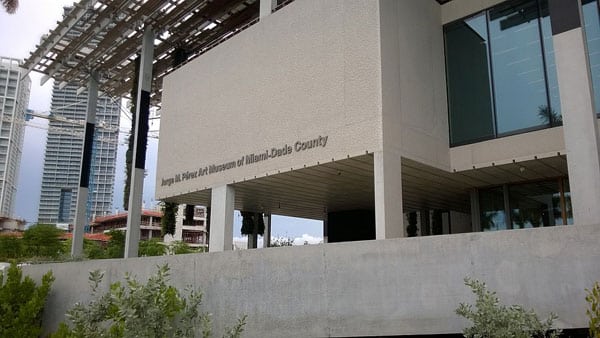
August 8, 2018; New York Times
As an excellent article by Robin Pogrebin in the New York Times details, a shift in the art museum world to address racial equity in meaningful ways among its curatorial staff is emerging. Prodded by philanthropy—the Ford Foundation, with the Walton Family Foundation, last November committed $6 million over three years to promote curators of color—“a growing number of museums are addressing diversity with new urgency,” Pogrebin writes. Local politics is also playing a factor. Progrebin notes that New York City art museums “must adopt inclusion plans by next February or risk having their funding cut by 10 percent.”
As NPQ has reported, the field of art curators has been heavily white dominated. A 2015 study published by the Andrew W. Mellon Foundation found that 84 percent of art museum curators were white (compared to 62 percent in the US population). Of the remainder, six percent were Asian, four percent were Black, and three percent were Latinx (reported totals for American Indians and Native Hawaiians were less than 0.5 percent each). These numbers, of course, reflect broader nonprofit trends, as documented by BoardSource’s Leading with Intent report.
Strategies that Pogrebin highlights that are being used to address racial equity include direct hiring of more curators of color, creating paid internship positions “and partnering with foundations and universities that fund curatorial jobs to ensure that the next generation of leaders of color get into the pipeline.”
As for where art museums are at in terms of their hiring currently, there is a wide range, as this chart published by the Times, based on self-reported data from the surveyed art museums, shows:
| Museum | Percent full-time curators of color |
| Pérez Art Museum Miami | 50 percent |
| Brooklyn Museum of Art | 39 percent |
| Los Angeles County Museum of Art | 36 percent |
| Museum of Fine Arts Houston | 32 percent |
| Denver Art Museum | 29 percent |
| San Francisco Museum of Modern Art | 28 percent |
| Guggenheim Museum | 26 percent |
| Detroit Institute of Arts | 25 percent |
| Museum of Modern Art | 23 percent |
| Whitney Museum | 22 percent |
| Art Institute of Chicago | 19 percent |
| Philadelphia Museum of Art | 19 percent |
| Metropolitan Museum of Art | 11 percent |
“You do see change,” Naomi Beckwith, now a senior curator at the Museum of Contemporary Art Chicago, tells Pogrebin. Beckwith cautions, however, that museums need to do more than hire curators of color. They also need to make sure curators of color “feel embraced and emboldened” to curate new exhibits that broaden our understanding of the field.
Sign up for our free newsletters
Subscribe to NPQ's newsletters to have our top stories delivered directly to your inbox.
By signing up, you agree to our privacy policy and terms of use, and to receive messages from NPQ and our partners.
The Chicago museum “has been steadily building an inclusive roster of curators as a way to attract new audiences and rethink the narrative of art history typically framed around Italian Renaissance and Western European ideals,” Pogrebin writes. “Who you choose in organizing the program has an impact,” Chicago museum director Madeleine Grynsztejn says to Pogrebin. “You are responsible for correcting a canon.” Pogrebin also interviews Eugenie Tsai, one of seven curators of color (out of 18 total) at the Brooklyn Museum, who adds that, “When you have people in an institution who have a range of perspectives, you have a much richer program [and an] openness to consider exhibition proposals, to consider programming, to consider hires, to consider things another group might want to dismiss as not what’s important.”
Of course, resistance to change has not disappeared. “Museums have tended to explain away their lack of diversity by bemoaning a scarcity of qualified curators,” Pogrebin writes. But, as she points out, “Art professionals say museums just have to look a little harder for help—perhaps to Spelman College’s new Curatorial Studies Program or the Schomburg Center for Research in Black Culture’s Teen Curators program.” Elizabeth Easton, who directs the Center for Curatorial Leadership in New York City tells Pogrebin that her center has no difficulty finding qualified young candidates of color at state schools, adding that, “When people say it’s so impossible, that isn’t true.”
Among the barriers to people of color becoming curators that Pogrebin highlights are “exclusion from informal mentoring networks, resistance to alternative perspectives on art history, and financial hurdles: many entry-level internships are unpaid.”
Regarding compensation, Pogrebin notes a number of steps that can be taken. The Los Angeles County Museum of Art, she mentions, created two paid fellowships. The museum also partnered with the Herberger Institute for Design and the Arts at Arizona State University “to establish a three-year program that combines academic training and work experience to develop a new generation of diverse curators, directors and other museum professionals.”
Ultimately, the goal isn’t simply to hire more curators of color or to feature more diverse artists, but for museums to fundamentally alter their approach to artwork and exhibitions. It is rather, as Thomas J. Lax, an associate curator at New York’s Museum of Modern Art, says to Pogrebin, “shifting the way our stories are told.”—Steve Dubb
This article has been altered from its initial form at writer’s request.













